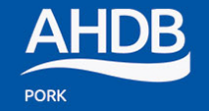Weight of pig

What To Look For:
Higher levels of tail biting lesions were found as the pigs got older/heavier
Additional information:
The risk of tail-biting lesions increases as pigs get older/heavier8. As pigs grow, they will impede movement of other pigs around the pen more than they did while smaller; there may also be a change from more juvenile playful behaviour and tolerance levels of other pigs to a less tolerant outlook which could include retaliation eg bites and fighting. There is also a suggestion that, as pigs become sexually mature, they may become more active and disruptive, which could affect behaviour.
While some tail damage will heal with time, in most instances tail lesions originate or get worse as a pig gets older (while still in mainstream pens). In finishers on straw, this confirms the general understanding that finisher-weight pigs are at higher risk of being tail bitten, rather than a flare-up of tail biting at a younger stage, which then recedes.
Suggestions:
Tackle tail-biting risks as early as possible to reduce presence of tail-biting as animals grow. If animals on the unit routinely begin tail biting at heavier weights, consider changes in management (eg increase straw, change in ventilation or diet) to reduce tail-biting risks at this point. Consider splitting pens or moving pigs to slaughter at smaller weights.
Additional material:
Defra code of recommendation for pigs - https://www.gov.uk/government/uploads/system/uploads/attachment_data/file/69369/pb7950-pig-code-030228.pdf
